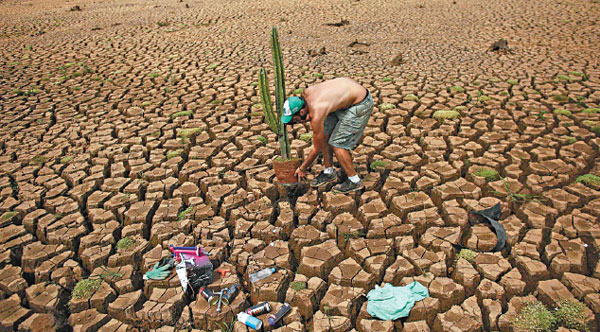Rain forest's destruction blamed for long drought
Taps run dry as Brazil suffers worst water shortage in eight decades
Vera Lucia de Oliveira looks to the sky, hoping for any sign of rain.
For weeks, the taps in her home have run dry as Sao Paulo, Brazil, has suffered its worst drought in eight decades, with rainfall one-third the normal level. Without heavy and prolonged rain, the city of 23 million could soon run out of water, experts warn.
"We are always thinking: The rain is coming, the rain is coming," said Oliveira.
A growing consensus of scientists believes the answer lies not in the sky above their heads but in decades of deforestation of the Amazon rain forest hundreds of miles away.
The cutting of trees, scientists say, is hindering the rain forest's ability to absorb carbon from the air - and to pull enough water through tree roots to supply gigantic "sky rivers" that move more moisture than the Amazon river itself. More than two-thirds of the rain in southeastern Brazil comes from these sky rivers, studies estimate. When they dry up, scientists believe, drought follows.
These rivers in the sky play a pivotal role not just in Brazil but South America as a whole, according to a recent study by Brazilian climate scientist Antonio Nobre of the Center for Earth System Science.
The study draws together data from multiple researchers to show that the Amazon rain forest may be closer to a tipping point than the government has acknowledged and that the changes could be a threat to climates around the globe. His work is causing a stir in drought-stricken Brazil as environmental negotiators meet in neighboring Peru at the UN climate talks.
Destruction of the Amazon rain forest went unchecked until 2008, when the government put teeth in its environmental laws and sent armed agents into the rain forest to slow the pace of deforestation by ranchers, soy farmers and timber speculators. The impact was quick: Destruction in 2012 was one-sixth of what was recorded eight years earlier.
Researchers at the University of Minnesota highlighted two "once-in-a-century-level droughts" occurring in 2005 and 2010 in the region. They used climate simulations to find that deforestation "has the potential to increase the impact of droughts in the Amazon basin."
The sky rivers are generated by the forest acting as a massive pump, according to research that has shown the rain forest's uniform humidity consistently lowers atmospheric pressure in the Amazon basin. That allows it to draw moist air currents from the Atlantic Ocean much farther inland than areas that don't have forests.
|
Brazilian artist and activist Mundano places a cactus plant in the cracked ground on Tuesday to work on a drought-related cactus installation called Desert of Cantareira at Atibainha dam, part of the Cantareira reservoir, during a drought in Nazare Paulista, Sao Paulo. Nacho Doce / Reuters |



















